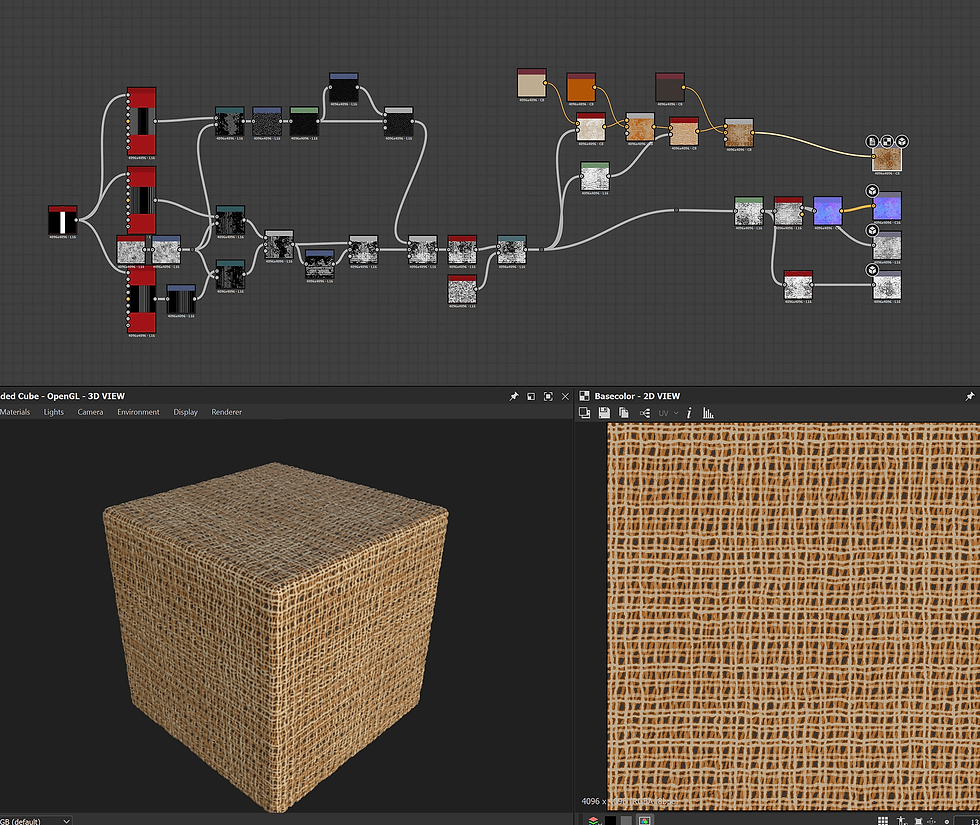Semester 3 Week 13
- Drew Abegg
- Nov 27, 2021
- 2 min read
Game jam! Game jam. Big dreams, big ideas, big potential, big challenges, big workloads, big stresses. All of that. as I mentioned previously, the games made in this jam must utilize multitouch. On Monday morning, we learned that the theme of the jam is "mad". After some mingling, we ended up forming a pretty large team to work on a project tentatively titled, "Mad Gods Wrath". Set in a steampunky-greek Atlantis. It takes place before the continent is sunk, so it's a sky island. You take the viewpoint of a god in the heavens, smiting the people below you. We are making everything destructible and physics-based, and it will be more of a sandbox toy than a game.

Once again, I'm the art director. We originally wanted to create hand painted textures, but ultimately we cut that for time. Instead, everything will be low poly with simple solid colors. Similar to Cyber Ninja, we will use an easily-iterable set of materials as a color pallet. My ultimate goal for the art of the game is to look cohesive, as if it's an interactable 3D illustration. We're taking cues from games like Untitled Goose Game, What The Golf?, and Monument Valley. It will likely be unlit, but possibly cel shaded.
The camera will be fixed, which allows for a more traditionally structured visual composition. I've created a few iterations of the island and it's layout. The appeal of the game is the destruction of objects, so getting as much variety in those objects as we can is vital. Right now, we aren't really achieving this. Because of technical hurdles, we haven't been able to maintain a good pace of asset production.
These technical hurdles include bad file naming and structure (never again), and understanding the skeletal animation pipeline, but the main one unique to this project is related to the destruction system. We are using a tool in UE that fractures a mesh into chunks that Chaos will do physics simulations on. This will allow us to shatter meshes as long as some requirements are met. Each mesh must be "watertight", which is to say, without open edges. Also, no meshes can overlap. These rules both go against my usual modeling instincts. It's a difficult adjustment in some cases.
Yesterday, Compton put me on to a couple of addons for the Blender to Unreal pipelines. One of them, UE to Rigefy, is deep into the skeletal mesh and animation pipeline, which I know very little about. The other, Send to Unreal, however, will significantly change the way I work between the two. The main appeal is that it can export from Blender and into UE with the press of a button. It also addresses a bunch of discrepancies between Blender and Unreal, such as the unit scales. There are a handful of useful options that I'll dig into, like one that will export an fbx onto your disk every time you send to UE, which will help keep iterations synced between Blender, UE, and any other program (Substance, Marvelous, 3rd example). These tools are developed by Epic, and it's really neat to see them








Comments